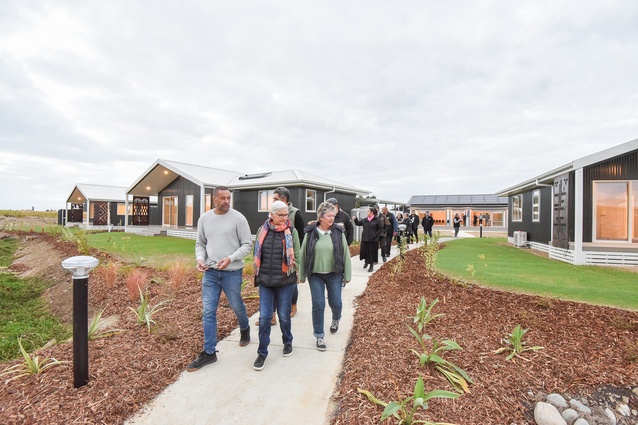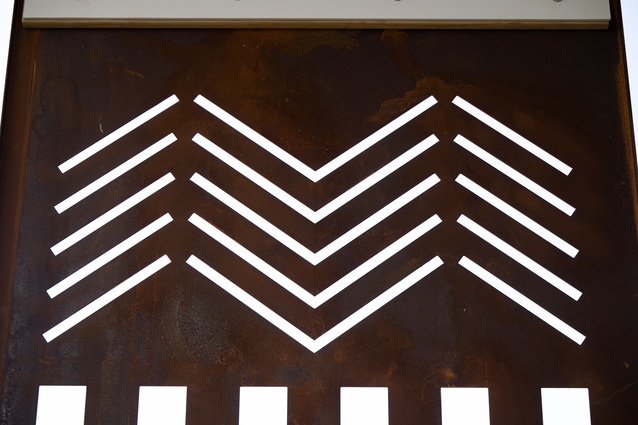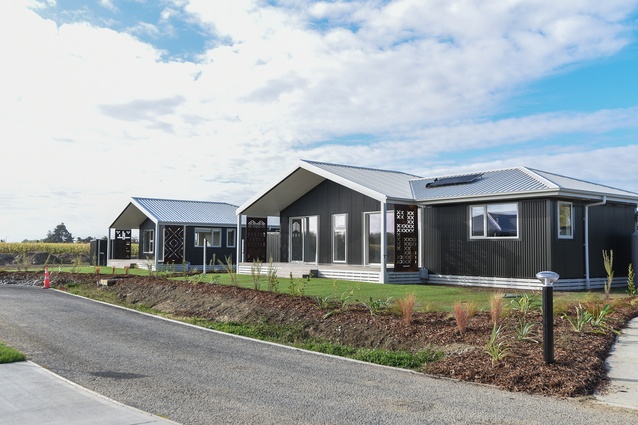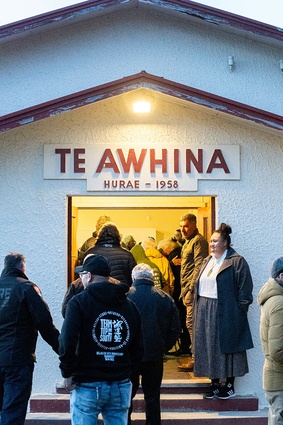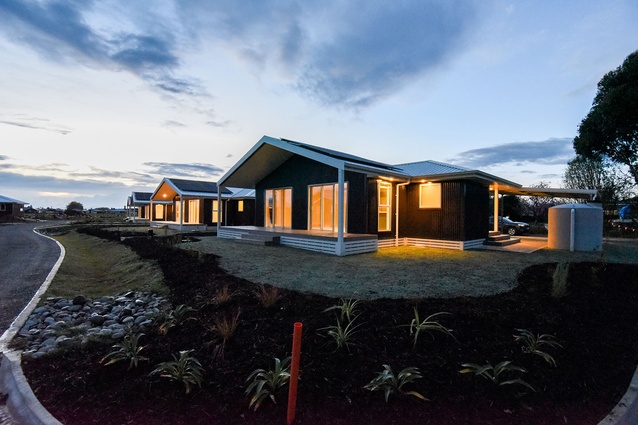A place to call home
A new papakāinga in Motueka that offers 20 low-cost rental homes is a dream come true for the whānau of Te Āwhina Marae and a game-changer for the marae and the wider community. It’s also a project close to the heart of designer Keni-Duke Hetet of Waka Group Architecture.
Nicola Coburn (NC): Tell us about the papakāinga.
Keni-Duke Hetet (KDH): It has been a long-held dream of the whānau of Te Āwhina Marae to be able to offer housing for their people – a place for their people to come home to – and we first got involved in 2011 when plans for the wider marae redevelopment started to take shape. By around 2020, Stage 1 of the marae development had been completed and the focus turned to Stage 2 – housing.
After securing land in 2021, design work for the papakāinga got underway in earnest and once key investor Te Puni Kōkiri – Ministry of Māori Development came on board later that year, it was all go. By September last year, the first whānau had moved in. In all, the papakāinga is the largest of its kind in Te Tauihu o te Waka-a-Māui (the top of the South Island) and offers a mix of two-, three- and four-bedroom affordable rental homes. I think currently there are around 65 people, from tamariki to kaumātua, living on site.
NC: How did you come to be involved?
KDH: I set up as an independent architectural designer in 2007, when my wife and I decided to have children and I wanted to work from home. Up until then, I’d been working for a large architectural practice. It was actually a terrible time to start a business, as the GFC had just happened, but I figured if I could survive while the economy was bad then I’d do fine when it picked up again. That’s pretty much how it played out and by 2010, I had dozens of projects, mainly new homes, on the go.
A few years in, we started exploring more culturally-grounded works and formulated a business plan to ensure that happened. I was really keen to get involved in fixing marae throughout the country, as a lot of them had buildings that were a bit run down and unsafe. I also had a strong desire to somehow express our cultural values in new projects, which was something I hadn’t really seen at that point. Other than DesignTRIBE (Rau Hoskin’s practice from Te Tai Tokerau), there were no other Māori-owned architectural practices that I knew of. It was back in those early days of our practice that we first got involved in the development plans at Te Āwhina Marae in 2011, so it’s been a few years.
NC: What were your initial thoughts and the key aspects that shaped the design?
KDH: Integrating the buildings into the landscape was a key move and I wanted to define boundaries by using native plantings rather than fences. The incorporation of a community building in the centre of the development was also a big idea — so whānau could celebrate birthdays, play cards, have barbecues, play basketball and generally have a place to gather.
There was also a strong focus on sustainable practices, using timber for the houses as much as possible in the wall and foundation construction, and incorporating natural materials. All of the houses are insulated with wool and all the interiors have been painted with low-VOC (volatile organic compound) paints. The homes also have thermally broken, low emissivity (Low-E) double-glazed windows and doors, and the whole village is powered using grid-tied photovoltaic solar panels. Hot water, which is a big cost when it comes to power, is taken care of by a solar system which cuts the energy bill required for hot water by about 85 per cent every month.
NC: How has the project gone in terms of budget and delivery?
KDH: The papakāinga was finished a few weeks ahead of programme and under budget, which is pretty rare for a development of this size. We had a few minor issues to deal with, but nothing major that could have threatened the project budget or timelines. I think. on reflection. the key to it was having the right people involved – we had an amazing redevelopment team, construction company, government and council support and other specialist services that all contributed in a critical way to the success of the project.
NC: Is this the first papakāinga you have designed?
KDH: Yes. However, for me, it’s the culmination of years of working on housing projects. We’ve also completed some medium-density residential housing developments, which are similar in nature, so we’re reasonably versed in this space. Combined with the added knowledge of knowing how our whānau and communities like to live, the papakāinga was really an extension of those projects.
NC: Tell us about some other projects you are involved in.
KDH: At the moment we’re designing a culture centre for one of our local iwi, which will be a central hub for education, business and culture, so that’s pretty awesome. And we’re also working on a low-carbon house in Tasman Bay, which is an amazing project with awesome clients. We’ve also been working on a bunch of school projects, which I like because it feels like you’re helping out the teachers and kids. And we’re working on a new building for Te Kura o Pakarana School in Motueka, which has been a privilege and pleasure to be involved in.
We have quite a few marae projects on the go, including one in the Bay of Islands, and I’ve recently completed the concept design phase for our new dining room and kitchen in Te Kuiti, my hometown. That one’s close to my heart as my father designed the original whare kai with an architect back in the early 1980s. We’ve also just completed some buildings for a huge new development at Hopuhopu, up in the Waikato.
NC: How has it been seeing the papakāinga come to life?
KDH: I’ve spoken to a few of the residents now about what their whare is like to live in, and they all say the same thing: awesome! So that makes me happy. On a personal note and from a designer’s perspective, I had quite a strong vision years ago about how the village could work, and it’s been great that that’s come to fruition. To have your convictions and visions validated like that is extremely satisfying.
NC: What else is on the horizon for Waka Group?
KDH: I’m currently working with a couple of councils on their long-term cultural urban policies and Kāinga Ora to develop cultural narratives for some of their housing developments. It’s slightly different mahi that requires a different set of skills but it’s super important because of the social impacts these types of developments have on our communities. By using our cultural values to guide us, we can make quite a big difference to urban outcomes, creating better communities while simultaneously taking care of the environment we live in. It’s interesting work and I’m increasingly finding myself more involved in this type of mahi, which is pretty cool.

